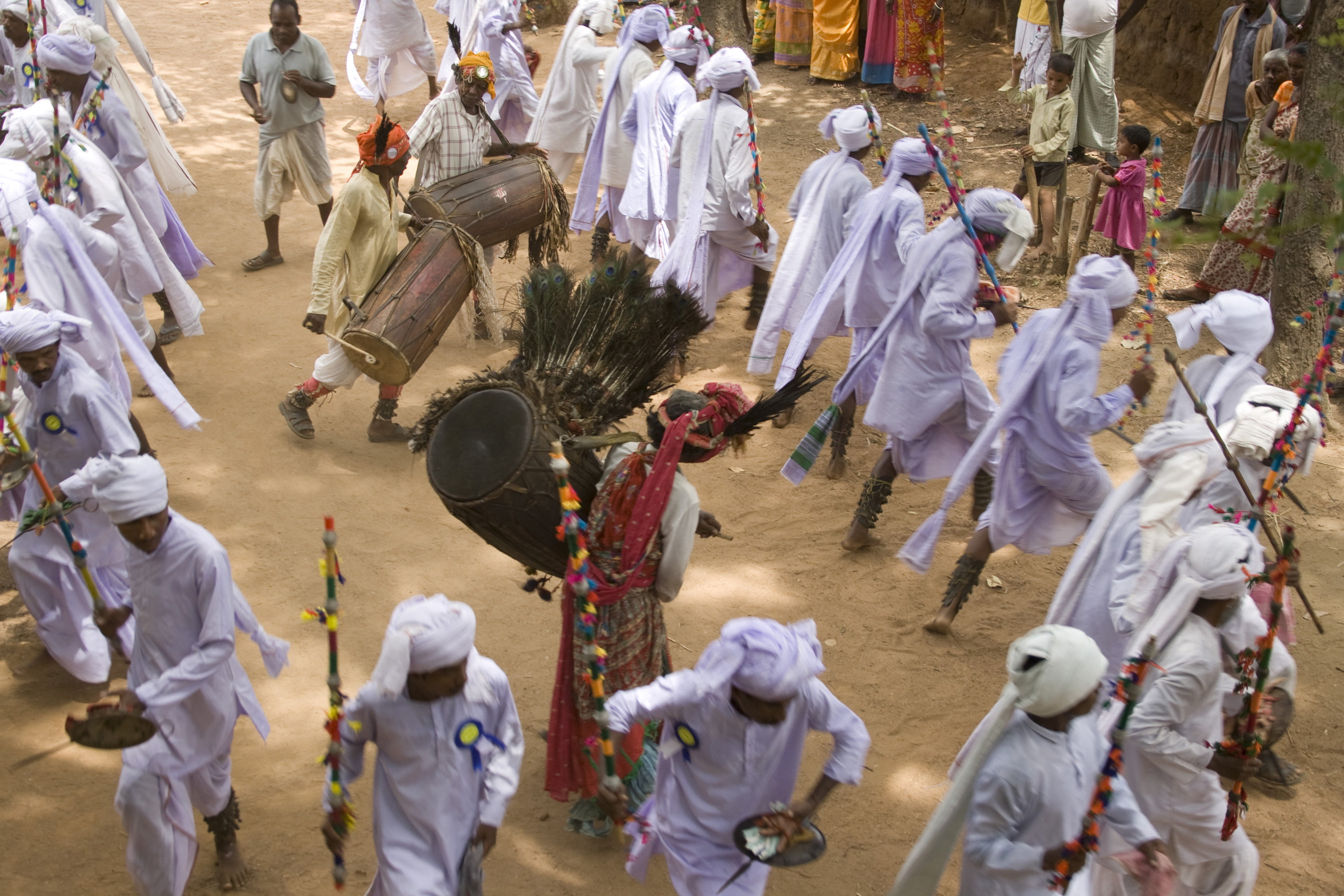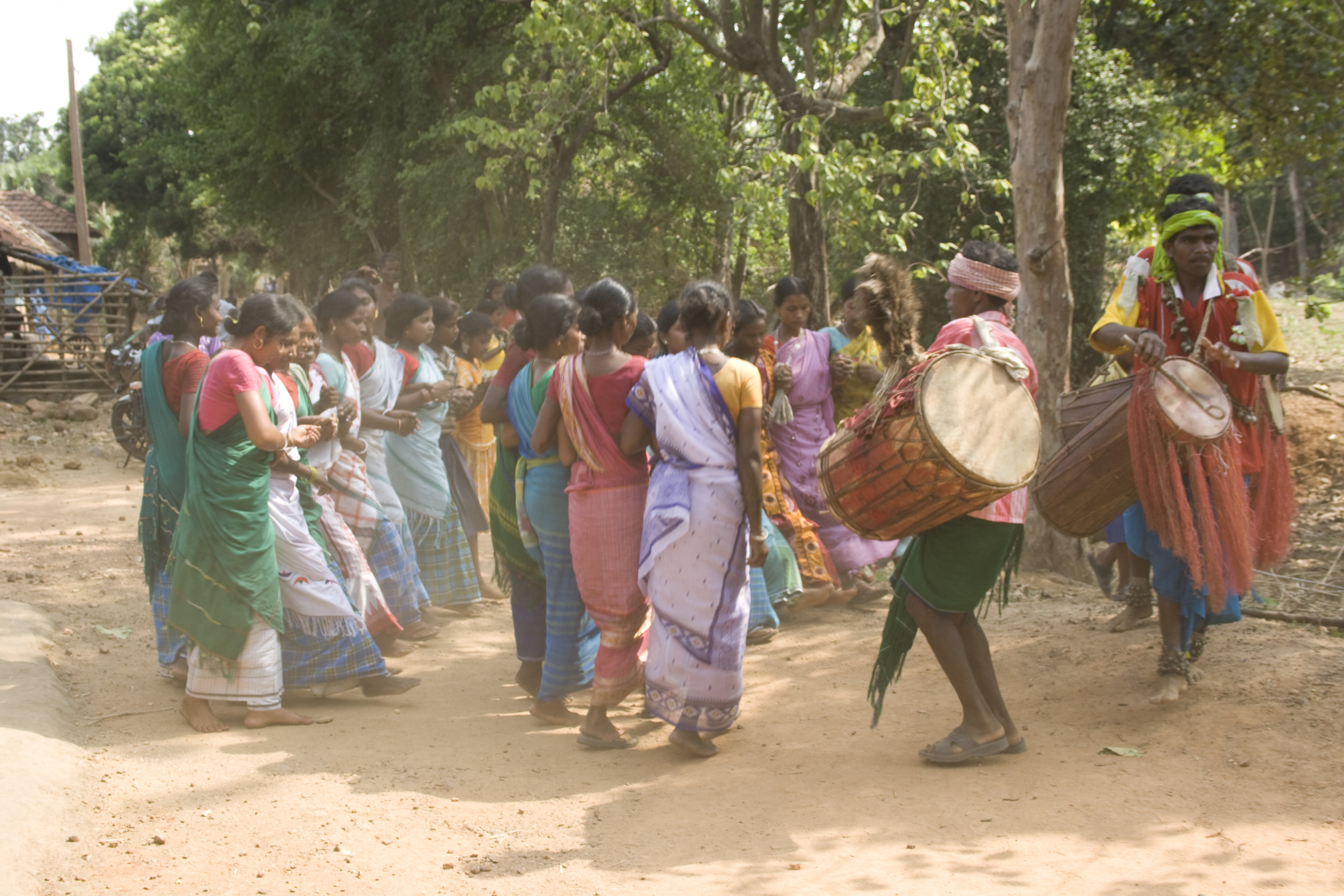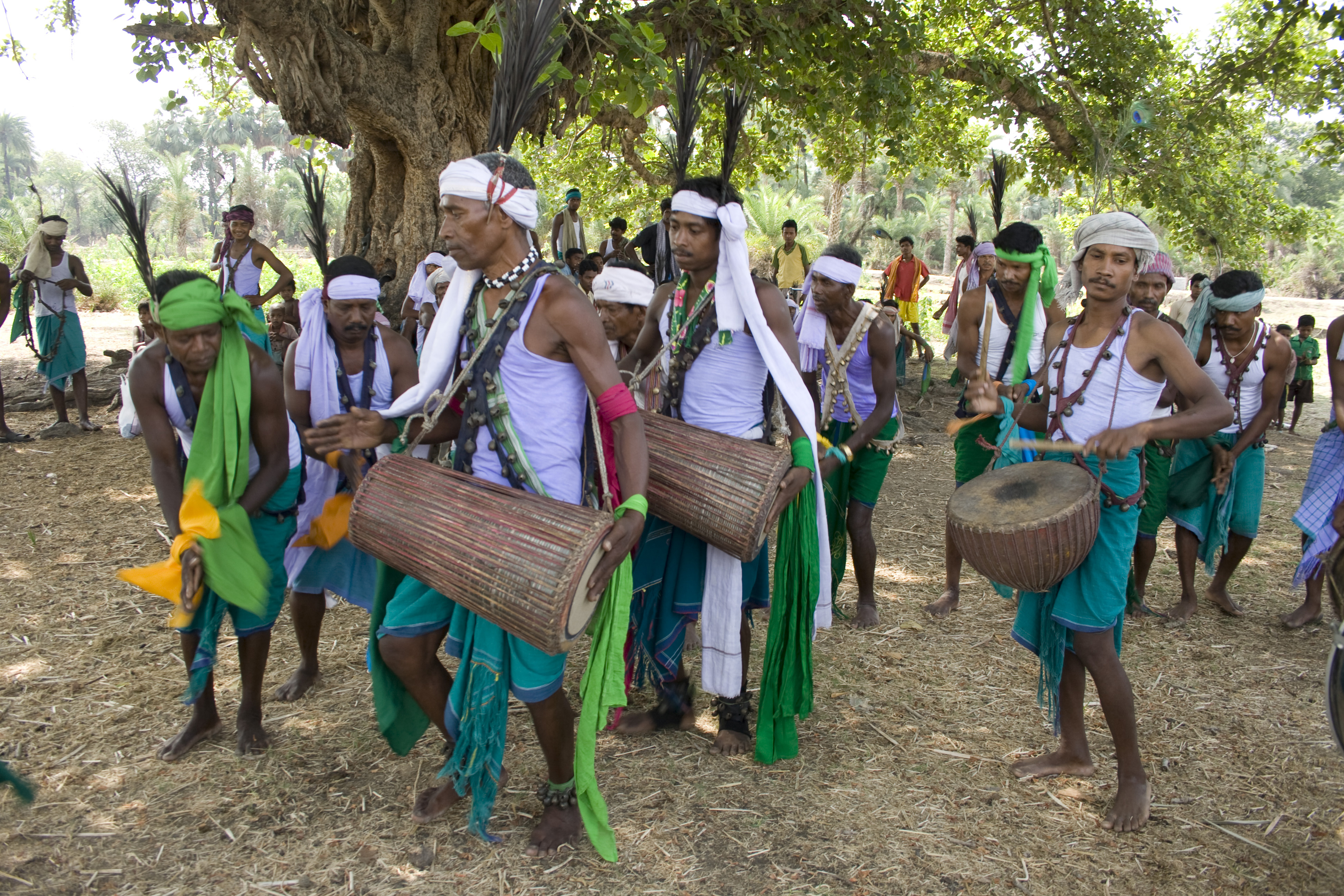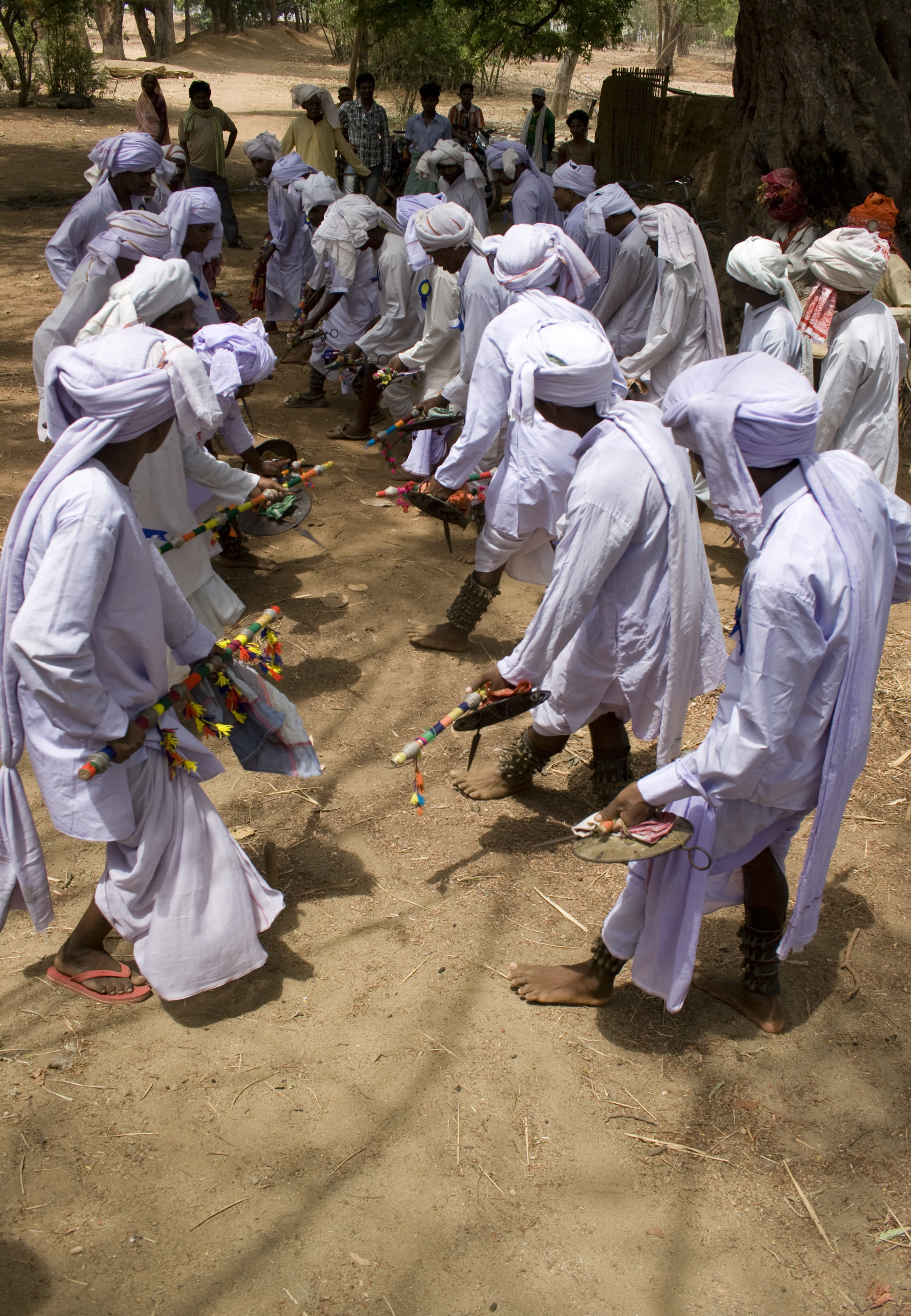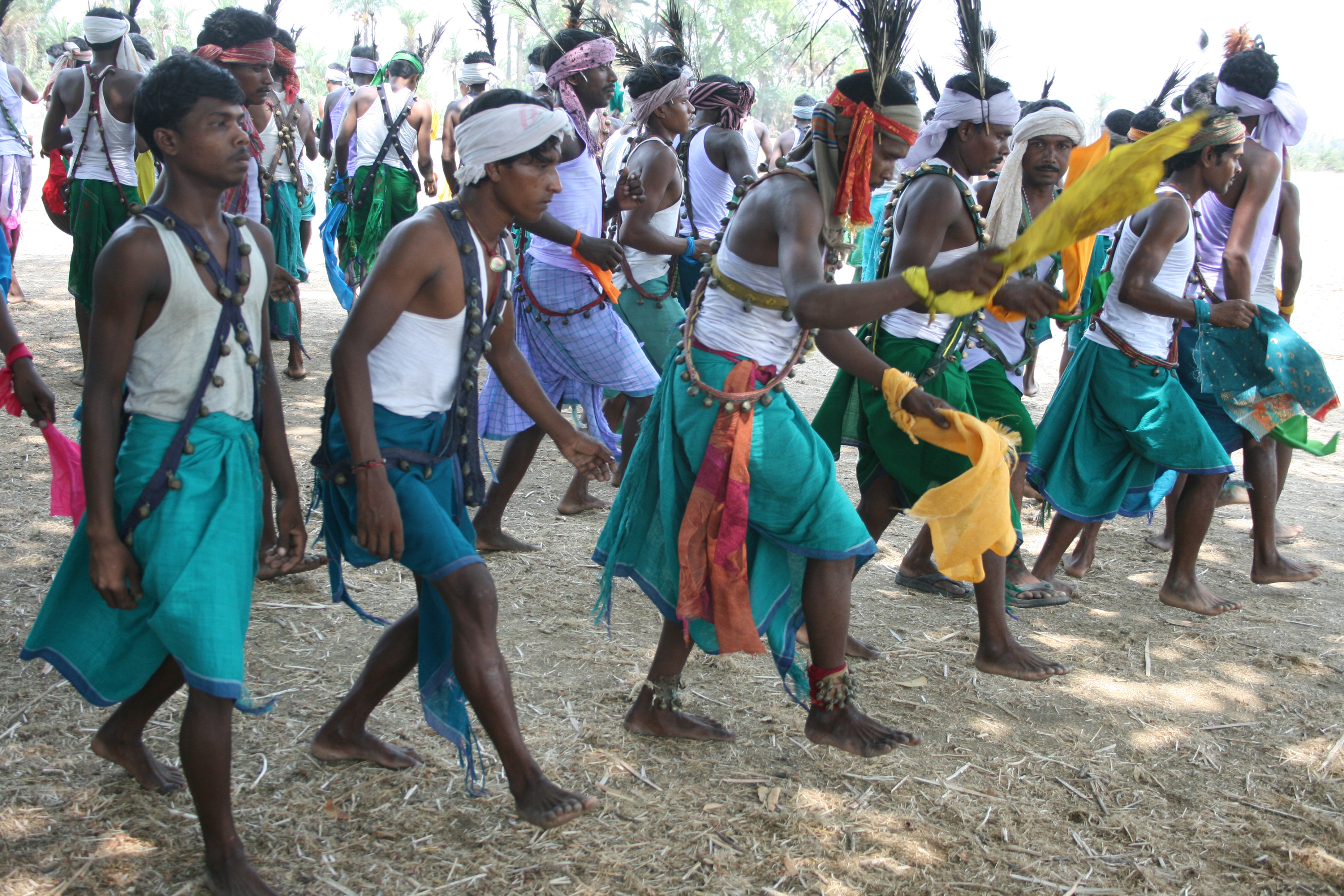
|
The dancing village in the sun (published in SONGLINES Magazine) It is 10am and the temperature is already 40°C. Around 100 dancers, drummers and cymbal players, all male and clad in white and green get ready for dancing under a huge and ancient banyan tree. Slowly the whole village, women, children and men gather around the dancers and follow each step and beat. After a slow vocal introduction the dance starts in full swing: the tak-tak-tak-tak, tak-tak-tak-tak of the huge cylindrical dhol drums is accentuated by the dum-dum, dum-dum of the even bigger raha drum. The experienced dancers – men of all ages – dance in a big circle alternatively moving into the centre, then elegantly turn around towards the outer fringe of the circle and back again, at the same time swinging their hips and heads around. We are on the village ground of an ancient Santali village in the Indian state of Jharkhand. This is one of the areas in India, where villages still consist of a functioning community spirit and a simple farming economy provides for all. With a population of around 4,000,000 the Santali people are one of the largest indigenous communities in India. Though influenced by other communities they still speak Santali, an Austro-Asiatic language and celebrate rituals related to their traditional belief system. At the centre of their agricultural and life-cycle event and religious rituals are the practices of musical instrument playing, singing and dancing. In the meantime the musicans and dancers are in full swing and unstoppable. They perform the karam dance, which can be either performed as dance for the livings or for the dead. Fortunately we attend a dance for the living today. It is already past lunchtime and now even hotter. The women demand their right to perform the dances. Like the men they move in a circle, one holding on to the other, hips and legs moving unison while stepping slowly creating a anti-clockwise movement. In the lagne dance the male musicians play two conical tumdak drums and the tamak kettle drum. The former played with both hands and the latter with two drum sticks, while the kurtal cymbals keep the rhythm. Despite this generally merry atmosphere and basic needs provided by the village farm economy, dark clouds loom over this traditional community. On the wayto the village we saw the upturned fields, deep gaping holes and truckloads of coal being shipped away from Santal land to the power stations of the upwardly moving middle-classes of India. The villagers explained that soon the heavy equipment will move into their village, destroy their fertile land and the ancient village grove, where their spirits watch. When the coal is removed there will only be a barren Martian landscape. Though the coal produces electrical power, there is still no power supply in this and neighbouring villages. Today we are invited to a Santali wedding: the main event will be celebrated at the bride’s village The women dance around the impromptu wedding shrine fired on by the professional village drummers. Presently the groom’s party has arrived; he is easily recognizable with his pointed white hat and surrounded by his best man and male relatives lead by village musicians. The much bigger bride’s party has already danced for hours on the other side of the kulhi, the village street. The male dancers carry sticks, bows and arrows and shields and enact an ancient battle over the bride. They perform the vigorous peykaha don dance. ‘Don’ means jump and so both parties, bride’s and groom’s sides, approach each other with this ‘jump dance’. Exhausted, the dancers sit down at the centre of the village, exchange pleasantries and finally agree to let bride and groom be together and so the marriage proper can begin. In all Santali festivals and events dance and music making are regarded as most important and indispensible. One can only hope that despite the fundamental andfast moving changes of present-day India these people will be able to survive as a community and with them some of the dances, songs and instrument playing. will remain. Photographs by Sudipta Modi and Rolf Killius: |

